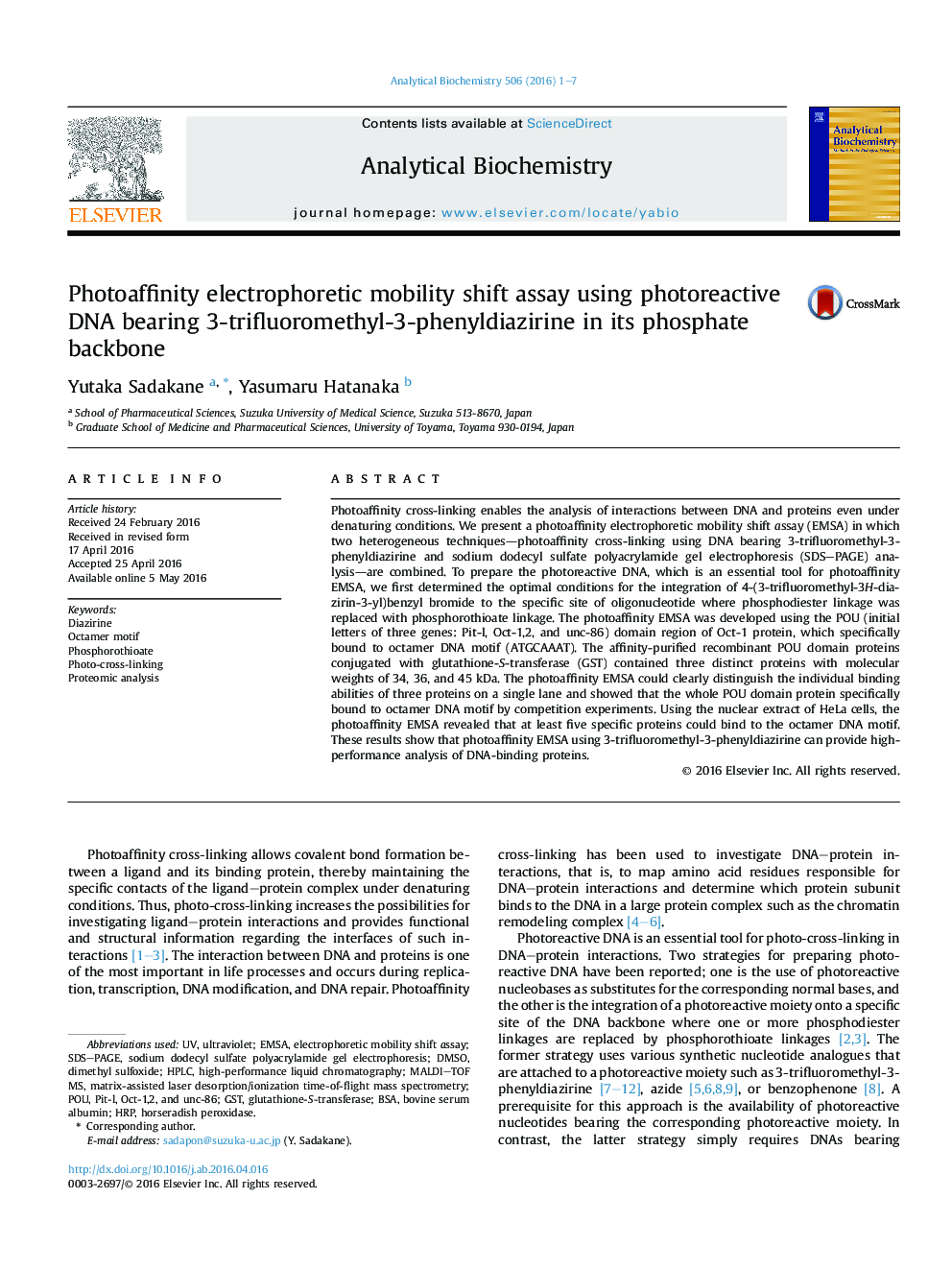| Article ID | Journal | Published Year | Pages | File Type |
|---|---|---|---|---|
| 1172691 | Analytical Biochemistry | 2016 | 7 Pages |
Photoaffinity cross-linking enables the analysis of interactions between DNA and proteins even under denaturing conditions. We present a photoaffinity electrophoretic mobility shift assay (EMSA) in which two heterogeneous techniques―photoaffinity cross-linking using DNA bearing 3-trifluoromethyl-3-phenyldiazirine and sodium dodecyl sulfate polyacrylamide gel electrophoresis (SDS–PAGE) analysis—are combined. To prepare the photoreactive DNA, which is an essential tool for photoaffinity EMSA, we first determined the optimal conditions for the integration of 4-(3-trifluoromethyl-3H-diazirin-3-yl)benzyl bromide to the specific site of oligonucleotide where phosphodiester linkage was replaced with phosphorothioate linkage. The photoaffinity EMSA was developed using the POU (initial letters of three genes: Pit-l, Oct-1,2, and unc-86) domain region of Oct-1 protein, which specifically bound to octamer DNA motif (ATGCAAAT). The affinity-purified recombinant POU domain proteins conjugated with glutathione-S-transferase (GST) contained three distinct proteins with molecular weights of 34, 36, and 45 kDa. The photoaffinity EMSA could clearly distinguish the individual binding abilities of three proteins on a single lane and showed that the whole POU domain protein specifically bound to octamer DNA motif by competition experiments. Using the nuclear extract of HeLa cells, the photoaffinity EMSA revealed that at least five specific proteins could bind to the octamer DNA motif. These results show that photoaffinity EMSA using 3-trifluoromethyl-3-phenyldiazirine can provide high-performance analysis of DNA-binding proteins.
